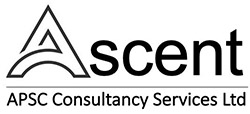How we can help?
Public Procurement is the process by which public authorities, such as government departments, state agencies or local authorities, purchase works, goods or services from companies.
Within the public sector, procurement is a huge expense funded with taxpayer euros.
A Process Audit can provide assurance that the approach to any competitive processes is consistent with and in compliance with EU Directives and/or the National Public Procurement Guidelines for Goods & Services.
A Typical Procurement Process Audit
The procurement audit process will normally follow an approach common to other types of audit. This will typically include the following steps:
- Establish the decision made by the public sector body awarding the public procurement contract.
- Establish the audit trail i.e. the process by which the decision was made, including identifying key documents, people making the decisions and how the decisions have been documented.
- Follow the decision-making process from start to finish, using a structured approach for each stage, taking account of the need to allocate audit resources to the planning and preparation phase and the contract execution phase.
- Determine the range of sources of evidence to be used which will include internal and external sources such as documents, meetings, inspection (including by electronic means), data analytics and third-party evidence from publicly available sources.
- Form a judgement about the process, the award decision and the execution of award decision.
- Document the audit conclusions.
- Determine how and when to report on the decision made, including any follow-up of the implementation of conclusions and recommendations from past audits.

Capabilities
A business strategy is the means by which it sets out to achieve its desired ends.
If you have been selected for a business audit, here is what you need to know.
Restructuring your company could restore its viability and improve its liquidity position.
Benefits
Research helps you plan the best way to get your product from the manufacturer to the retail shelf. In addition to deciding which retailers should carry your product, you should determine where your inventory will be held.
Go to your team, and tell them you want to make a fresh start. Tell them you want them to enjoy their jobs more and get more done.
In this problem solving step, you will want to figure out what caused the problem, what the problem looks like at this moment, and the urgency of addressing the problem.
Insights
- Hello world! June 18, 2022
- US Stocks Are Expensive April 11, 2017
- Investment Update, Fourth Quarter 2016 September 1, 2014
- Four Big Mistakes Your Small Business Is Making March 22, 2014
- 9 Resources to Get You Prepared for Tax Season March 21, 2014
